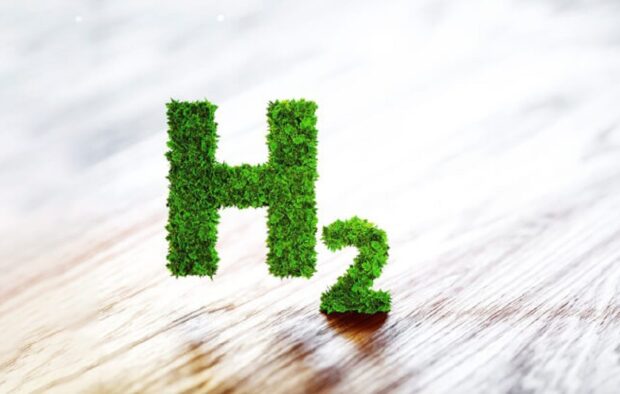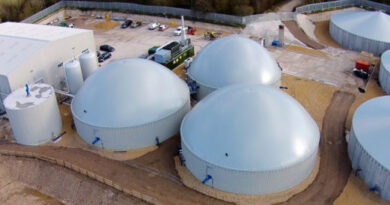The Top 5: Green Hydrogen Producers to Watch in 2022
 Six Mega Green Hydrogen Projects To Come Up In Australia With $2bn Funding
Six Mega Green Hydrogen Projects To Come Up In Australia With $2bn Funding
Lower costs of renewable energy have given a strong push for green hydrogen, another source of clean energy on the widening list of alternatives today.
Countries all around the world are pledging to cut emissions. The U.S. promised to reduce emissions by 50% to 52% over the next several years, and Europe wants to cut CO2 emissions by 55%. China also says it’ll stop releasing CO2 in the next 40 years. India also eyes a non-fossil fuel energy capacity of 500 GW and renewable energy fulfilling 50 percent of the requirement by 2030 and net zero emissions by 2070. Hydrogen may play a major role in achieving those goals.
Hydrogen is an energy source that emits zero greenhouse gases when burned. The only waste product is water vapour. Although the emissions are clean, producing hydrogen may not always be environmentally sustainable. The drawback to hydrogen as a fuel source is that it rarely is available in a gaseous form. There are various methods to produce hydrogen, and some of those methods emit greenhouse gases. Blue hydrogen involves capturing and storing CO2. This method isn’t commercialized or up to scale for widespread use. The grey hydrogen is more polluting as CO2 is not captured and is released into the atmosphere while producing it from fossil fuels. About 71% of our hydrogen today is “grey”. Brown hydrogen comes from coal gasification. People used this method for decades. However, it creates other greenhouse gases as by-products. The cleanest form of hydrogen, however, is green hydrogen.
Green hydrogen results from electrolysis. It involves the production of hydrogen splitting water by electrolysis using electricity from renewable energy sources such as wind or solar. This produces only hydrogen and oxygen and, therefore, has no harmful emissions. So, because of its potential, some forecasts peg the future value of the green hydrogen market to be over $10 trillion.
Although green hydrogen holds great promise, it’s costly to produce. It cost between $18.58 and $33.44 per dekatherm (a unit of energy), that is 9kWh/$, to produce green hydrogen in 2020, against $1.00 and $4.50 per dekatherm for natural gas. Worldwide, it is commonly accepted today that for Green Hydrogen t make an impact and compete its price needs to be brought to $1.5 to $3 per k.g, from the current range of $8-12 per k.g.
The industry is at a nascent stage as green hydrogen is not widely prevalent yet. Yet the costs are falling with innovative technologies and more and more firms popping up with clean hydrogen targets. However, a handful of companies are already starting to emerge as early leaders in the sector. So, here are five leading hydrogen companies to keep an eye on as the industry goes mainstream.
#1 Plug Power
Plug Power is a pioneer in the hydrogen fuel cell industry creating the first commercially viable market for hydrogen fuel cell technology. Cost being the most significant limitation to the industry, Plug claims to have a clear development roadmap to green hydrogen at a cost of $1.50 per kilogram (22kWh/$).
Plug already leads the industry with over 50,000 fuel cell systems for the e-mobility market (using electric powertrain technologies to power vehicles and fleets). Setting green hydrogen trends in North America, it has several hydrogen plants under construction to start production in 2022. The first of the company’s two new plants, “Project Gateway”, will be North America’s largest production facility for green hydrogen. It will produce 45 metric tons of liquid hydrogen daily. Another one, in Georgia, will produce 15 tons of fuel per day. Apparently, the company aims to build the world’s first green hydrogen ecosystem, positioning itself as the category leader. The company’s electrolyser customers include NASA and Boeing Co. (BA).
#2 Bloom Energy Corp.
From San Jose, California, this green hydrogen company makes fuel cell power generation systems that can run on hydrogen, biogas and natural gas. Firm, in 2021, unveiled an electrolyzer that can use the excess heat from heavy industries, such as steel and cement manufacturing, to produce hydrogen with less electricity. Notably, Bloom Energy can pair its Bloom Electrolyzer with solar energy and wind energy to generate green hydrogen. This can eventually again turn back into electricity for future usage.
Bloom Energy intends to market its electrolyzers at a 10 MW and 25 MW scale in 2023. The company’s collaboration with the SK eco plant may generate 4.2 MW of electricity at capacity and capture the thermal energy to provide heat and warm water for a nearby recreational centre. Bloom Energy is also working together with Baker Hughes to commercialize and deploy hydrogen solutions for energy transitions. The firm already has more than 700 MW of installed base in overall fuel cell technology globally.
#3 Ballard Power Systems
Ballard Power Systems engages in manufacturing, selling, and servicing proton exchange membrane (PEM) fuel cell products. The firm developed a proton exchange membrane (PEM) fuel cell that runs on hydrogen.
It provides expertise in the electrification of buses, commercial trucks, trains, marine vessels, passenger cars, and forklifts. The company is also working on new technologies that use hydrogen energy. Early this year, it partnered with Swiss industrial giant ABB to develop fuel cells to power ships. In India, it has also partnered up with Adani Group, investing in the commercialization of hydrogen fuel cells in India. Recently, the company also won a contract for 15 70-kilowatt “FCmove” fuel cell modules from Tata Motors. The modules will power zero-emission fuel cell electric buses. Furthermore, it conducted a successful test with Chart Industries to power fuel cells with liquid hydrogen. Such a wide array of investments positions Ballard Power Systems to emerge as a leader in the budding hydrogen industry.
#4 FuelCell Energy, Inc.
FuelCell Energy is headquartered in Danbury, Connecticut. The company designs, manufactures, operates and services Direct Fuel Cell power plants. FuelCell’s SureSource plant creates more hydrogen than it needs to power production. This leaves a surplus for industrial or transportation uses.
FuelCell supplies green and blue hydrogen power. The firm is aiming to produce low-to-zero-carbon power, capturing carbon and other greenhouse gasses while producing power. It also wants to store energy from intermittent renewable energy by converting it to hydrogen, which it can convert back to electricity as per need.
The company provides clean energy in over 50 locations all over the world and operates the world’s largest fuel-cell park, Gyeonggi Green Energy Fuel cell park, in South Korea.
Reportedly, the US Dept. of Energy-funded $8million last year. Giving impetus to hydrogen, this was for the design and building of a SureSource electrolysis platform to produce the fuel. The firm also gave a significant boost to the industry by delivering 12 million megawatt-hours of environmentally friendly energy. FuelCell’s tri-generation system, as some call “an ultimate clean energy source”, can deliver power, hydrogen, and water from a single platform. Toyota will soon begin using the system in its logistics facility in California. FuelCell’s clean energy endeavours don’t just stop there, it is also developing technology to capture carbon dioxide from industrial facilities.
#5 Air Products & Chemicals
Air Products & Chemicals (APD) is a U.S. company based in Pennsylvania. APD’s first hydrogen fueling station started in 1993, one of the first companies to adopt the practice. The firm also has had a relationship with NASA for 50 years back with every space shuttle, including the Mercury and Apollo missions, using liquid hydrogen.
Air Products is a global leader in liquefied natural gas (LNG) processing technology and equipment and now wants to be a leader in providing solutions to the world’s energy and environmental challenges through gasification, carbon capture, and clean hydrogen. It’s also one of the world’s largest suppliers of hydrogen and a leader in hydrogen fuel infrastructure.
It has several projects lined up for hydrogen. Air Products signed an agreement for a $5 billion world-scale green hydrogen-based ammonia production facility by 2025. Skipping on 3 million tons of CO₂ per year, the project may supply 650 tons per day of green hydrogen for transportation globally. In addition, it has $4.5 billion blue hydrogen project in Louisiana, a $7 billion carbon-free hydrogen joint venture in Saudi Arabia, and a $1 billion net-zero hydrogen project in Canada to enter service between 2024 and 2026.




